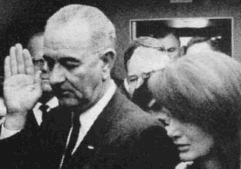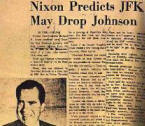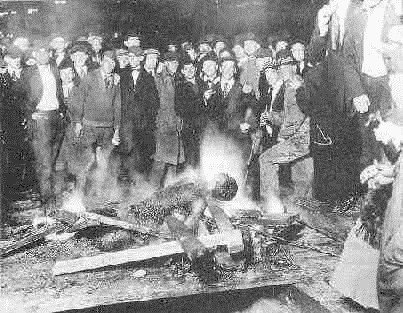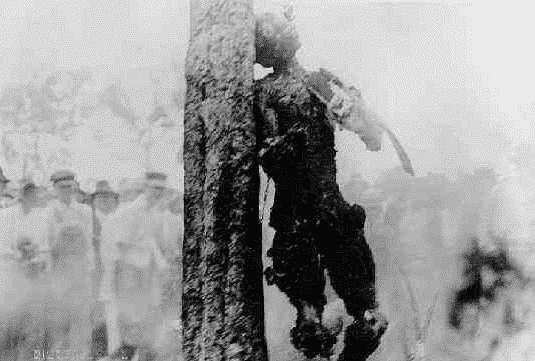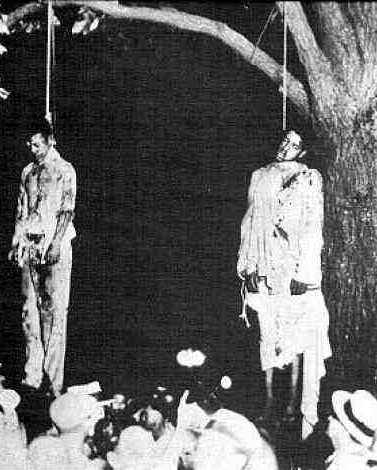The rebellion of the Southern slaveowners, which brought on the Civil War, was a British Empire-sponsored insurrection. The British supplied the arms used by the anti-U.S. insurgents, and coordinated the Confederate secret service activities in North America and Europe. These expanded efforts continued the political and irregular military operations of the Scottish Rite which had been led by Quitman, and by Pike after Quitman’s death.
For the final three years of the four-year Civil War, Judah P. Benjamin served as Confederate secretary of state. Benjamin supervised the financial and supply relations to the British Empire and its ally, Napoleon III of France, and ran the Confederacy’s international network of spies and saboteurs.
Benjamin’s secret service liaison man in England and the Confederacy’s chief arms procurer there was James Bulloch. We remember Bulloch as the man who had been arrested in Cuba during Quitman’s 1854 fiasco. John Slidell became the famous Confederate commissioner to France, where he married off his daughter Mathilde to Baron Emil Erlanger. The baron was an eminent German-French Jewish banker, closely tied to the British government and the highest levels of British freemsonry. Slidell and Benjamin negotiated the famous Erlanger Loan, the series of Confederate war bonds floated by this banker. They sold the bonds primarily to British oligarchs who felt poisonous hatred for the American republic. The collateral for the Erlanger loan was Southern slave cotton, that was smuggled out past the Union blockade.
John Slidell handled relations between the French Empire and the Masonic "filibusters," the raiders of Latin America. Slidell promoted the joint European/Confederate invasion of Mexico in the 1860s. The Confederate secret service, meanwhile, attempted to weaken the resolve of the Union to carry on the war. The key to their strategy was the old Knights of the Golden Circle, still in place in the north, midwest and southwest, involving pro-slavery whites-and American Indians. Sioux Indians, strangely organized into military Masonic lodges, wiped out 700 citizens of New Ulm, Minnesota and the surrounding area, while the town’s young men were off in the Union Army. Albert Pike was at the time the Confederate general officially in charge of arranging Indian attacks against the Union; Minnesota was also part of Commander Pike’s Masonic Southern Jurisdiction. Judah Benjamin based his main secret service group in Montreal, a safe haven since Canada was then still British territory. They coordinated across the border with Golden Circle networks in Illinois, Indiana, Ohio, and Wisconsin, and with the August Belmont Democratic Party machine in New York. Agents led by Jacob Thompson planned prison breaks, tried to burn down northern cities, and instigated anti-draft riots in which drunken mobs lynched black people and burned orphanages.
This ugliness was in vain. But just when Lincoln’s nationalist money policies and our industrial strength overwhelmed the rebellion, President Lincoln was murdered. A dragnet went out for the Confederate secret service operators, accused of participation in the assassination. Albert Pike escaped and joined Jacob Thompson in Canada. Judah Benjamin fled to England, joining the exiled Robert Toombs and James Bulloch. John Slidell stayed permanently in France. Confederate secret service agent John Surratt made it to Italy and hid in the Vatican, while Surratt’s mother was convicted and hanged on the charge of plotting with John Wilkes Booth to kill Lincoln. John Surratt was discovered and returned for trial. He was acquitted. But in 1870, Surratt admitted publicly that he had plotted with Booth to "abduct" Lincoln. He told of the days preceding the murder, of his trip to Montreal carrying money and messages from Judah Benjamin. The secret service bank in Montreal, where gold from Britain was deposited for Benjamin’s crew, was the same bank in which Lincoln’s assassin John Wilkes Booth had made his deposits six months before the killing. The war was over. But the defeated Confederacy was transformed into the romantic {Lost Cause}, an object of cultish reverence.
During Reconstruction
Anti-slavery congressmen pressed ahead with plans for Reconstruction, designed to break up the power of what was called the "chivalry," the feudalist lords of the prewar South. In Tennessee, the pro-Union faction tried to increase its political strength by putting through a law, granting the right to vote to the newly freed blacks.
The Knights of the Ku Klux Klan was a terrorist counterattack, beginning in Tennessee, designed to block Reconstruction and reverse the outcome of the Civil War. The Klan and the Scottish Rite were one and the same enterprise, continuing the imperial effort behind the slaveowners’ rebellion. Pike, Benjamin, Slidell, Toombs, Bulloch, and Thompson were all in exile at war’s end. Though Judah Benjamin had quickly become a wealthy lawyer for the British merchant oligarchs, his continuing preoccupation with defeating Reconstruction is indicated in letters he wrote back to the U.S.A. with complaints such as these: "I have always looked with the utmost dread and distrust on the experiment of emancipation so suddenly enforced on the South by the event of the war. God knows how it will all end!"; and: "the South is kept crushed under negro rule"; and: "I can never consent to go to New Orleans and break my heart witnessing the rule of negroes and carpetbaggers"; and: "nothing is so abhorrent to me as Radicalism which seeks to elevate the populace into the governing class."
From Albert Pike’s British sanctuary in Canada, on July 15, 1865, Pike issued a summons to the Supreme Council, to resume the operations of the Scottish Rite of Freemasonry, Southern Jurisdiction. Six weeks later, "under pressure from Masonic officials in the government," the new President Andrew Johnson permitted Pike to re-enter the U.S.A. The Rite was reborn over the next few years, as money and messengers went back and forth between Pike and the Confederacy’s sponsors in England.
In April 1866, a year after the murder of Abraham Lincoln, Albert Pike’s Supreme Council met in full costume inside the White House. There Lincoln’s successor President Andrew Johnson granted a pardon to Pike. The following year, the awed and grateful Johnson was granted advanced degrees 4 through 32 by the Scottish Rite. The Masons claim that Johnson’s Freemasonic involvement was an important reason why the pro-Reconstruction congressmen tried to impeach Johnson.
Albert Pike could not go home to Arkansas, however. He was still under indictment for treason by state authorities there, for inciting the Indians to break laws or treaties. So he settled in Memphis, Tennessee, just across the Mississippi River from Arkansas, becoming a newspaper publisher, lawyer-and president of the Tennessee Bar Association. Tennessee blacks got the right to vote in February 1867. Beginning that spring, Albert Pike and a small group of Confederate generals held several meetings in Nashville, at the Maxwell House Hotel, to form the Knights of the Ku Klux Klan.
The name was taken from the Greek, {kyklos}, meaning "circle. " It was no mystery to the pro-Unionists: The Knights of the [Golden] Circle had reappeared. Pike was appointed chief judicial officer of the Invisible Empire. He is said to have written the Klan’s military manual and ritual, and was the Klan’s expert on secrecy of organization-its secret grips, signs, and passwords. At one of the later Nashville meetings, General Nathan Bedford Forrest was chosen Imperial Wizard of the Klan. Albert Pike organized the Ku Klux Klan in Arkansas after General Forrest appointed Pike the Grand Dragon of that Realm. The Tennessee leaders of the Klan at the time of its founding were prominent Masons subordinate to Grand Commander Pike.
Pike’s old comrade and financial backer Robert Toombs returned from England in 1868. Toombs was appointed dictator of Scottish Rite activities inside Georgia, and Toombs and his family ran all aspects of the Klan within Georgia.
President Ulysses Grant said that the Klan worked "by force and terror to prevent all political action not in accord with the views of the members; to deprive colored citizens of the right to bear arms and of the right to a free ballot; to suppress [i.e. burn] schools in which colored children were taught and to reduce the colored people to a condition akin to that of slavery." In his newspaper {The Memphis Daily Appeal{ for April 16, 1868, publisher Albert Pike wrote: "With negroes for witnesses and jurors, the administration of justice becomes a blasphemous mockery. A Loyal League of negroes can cause any white man to be arrested, and can prove any charges it chooses to have made against him. "The disenfranchised people of the South ... can find no protection for property, liberty or life, except in secret association.... We would unite every white man in the South, who is opposed to negro suffrage, into one great Order of Southern Brotherhood, with an organization complete, active, vigorous, in which a few should execute the concentrated will of all, and whose very existence should be concealed from all but its members."
In the latter decades of the nineteenth century, British-centered finance gained supremacy over American industry and U.S. policy-making. Under British sponsorship, Pike’s Scottish Rite, Southern Jurisdiction, came to rule over much of the world’s Freemasonry. At length its headquarters moved from South Carolina to Washington, D.C.
Theodore Roosevelt, a racialist Anglophile and passionate Freemason, became U.S. President September 14, 1901, upon the shooting death of William McKinley. Teddy Roosevelt’s reign was the Lost Cause triumphant: Roosevelt’s revered exiled uncle, James Bulloch, Judah Benjamin’s secret service chief in England, had ghostwritten young Teddy’s book on naval history; and Teddy’s clique had finally conquered Cuba in the 1898 U.S. War with Spain. The Washington, D.C. statue honoring Klan founder Albert Pike was dedicated 39 days after Teddy Roosevelt’s inauguration.
The B’nai B’rith and ‘Egyptian Principles’
In his admiring biography of Judah Benjamin, Eli Evans quotes the famous attack against Benjamin’s pro-slavery fanaticism by Ohio’s Senator Ben Wade: "when old Moses, under the immediate inspiration of God Almighty, enticed a whole nation of slaves, and ran away ... to old Canaan, I suppose that Pharaoh and all the chivalry of old Egypt denounced him as a most furious abolitionist. ... There were those who loved Egypt better thanthey loved liberty.... They were Israelites with Egyptian principles." Senator Wade’s barb hit its mark. Judah Benjamin had deserted the religion of Moses. He had spat on the law of freedom, the gift that Jews celebrate in the Passover seder (which was also Christ’s last supper).
Since then, other "Israelites with Egyptian principles," those Jews who like Benjamin attached their destinies to the British Empire and its racialism, have become a vital component of the Anglo-American Eastern Establishment; "honorary Anglo-Saxons," they have helped transform the United States into an essentially mindless British model imperium. And the racialism they coauthored has brought tragedy to Jews as well as to others outside the racial pale. In the Civil War, twice as many Jews fought for the Union as for the Confederacy. Northern Jews, many of them recent German immigrants, were strongly pro-republican and anti-slavery. The predominant Jewish tradition in the South was not only pro-slavery, but overwhelmingly Freemasonic.
The Independent Order of B’nai B’rith formed in 1843 as a Jewish community sub-project in the restoration of Masonry by the Scottish Rite and the British foreign office. Though most of its lodges were in the North, B’nai B’rith was openly pro-Confederate. Though it claimed to be neutral in the war, many of the Order’s Northern spokesmen were stridently pro-slavery. B’nai B’rith’s post-Civil War leaders were pro-Confederate operatives, including later president Simon Wolf, who had been arrested by the War Department in Washington, D.C. as the lawyer for a Confederate spy ring.
Rabbi Isaac Wise established B’nai B’rith’s center for the "liberalizing" of Judaism in Cincinnati, Ohio-coinciding with Cincinnati’s other great Scottish Rite scheme, the launching of the Knights of the Golden Circle. Wise was officially neutral in the Civil War. Core leaders of the B’nai B’rith from then on have been Scottish Rite Masons. The political establishment associated with the Order has always had its headquarters in London.
In Richmond, the Confederate capital, Gustavus A. Myers was Secretary of State Judah Benjamin’s closest friend and Benjamin’s channel to banker August Belmont. The former president of the Richmond City Council, and the undisputed head of Richmond’s Jewish community, Myers was Freemasonry Incarnate.
Myers’s maternal grandfather, Moses Michael Hays, had brought the original "patent" and rituals from England to found the Scottish Rite in the American colonies. A Tory and financial partner of Boston’s slave trade millionaires, Hays passed his fortune and his Masonic and British underground connections to his daughter’s husband and sons, the Richmond Myers clan. Moses Myers, merchant partner of the Richmond family, was head of Norfolk’s Jewish community. His house is now a public museum, located on Norfolk’s Freemason Street. Inside is a large wooden plaque given to the family by Queen Victoria, in recognition of the family’s long service to the British crown and cause. Several generations, living in that same Moses Myers house, were British consuls.
All of Virginia’s Jewish leaders then were Masons, one of them Rothschilds’ official Virginia agent who was grand master of Virginia Masons during the war of 1812. After the Civil War, the Belmont/Rothschild faction took absolute control over the Jewish leadership within New York and trans-Atlantic finance. Joseph Seligman, who had been pro-Union like most American Jews, joined the British banking syndicate of Rothschild and J.P. Morgan, which ran U.S. government finance from the 1870s onward. London’s Anglo-Saxon and Jewish employees, banking partners of the Confederates against Lincoln’s nationalist money policies, were now merged as the Eastern Liberal Establishment. While Alabama cotton broker Emanuel Lehman lived in Civil War New York, he sailed back and forth to England raising money for the Confederate war machine. Continuing the family tradition, his Lehman Brothers firm supported the racialist eugenics movement, and tenaciously defended their investments in Nazi Germany.
But the bigshot was Jacob Schiff of Kuhn Loeb private bank. Schiff’s power was entirely trans-Atlantic: Travelling back and forth between London and New York, Schiff was Sir Ernst Cassel’s U.S. partner and representative; Cassel-the personal banker and the most intimate friend of Prince Edward VII, the grand master of British freesmasonry. (Edward’s son Albert Victor was supposed to be the subject of the Jack the Ripper story: His unapproved marriage was broken and covered up by the Freemasonic murders of witnesses.)
On behalf of the royal family, Ernst Cassel managed the finances of the British Fabian Society leaders, and the British Round Table in its outrageous African racialist endeavors such as {apartheid}. At Kuhn Loeb in the 1890s, partner Otto Kahn (a British subject) directly supervised Schiff and Cassel’s project to build up a certain snarling little railroad man who was a favorite of the old Belmont Confederate machine, Mr. E. H. Harriman. At that same time, the Warburg family joined Kuhn Loeb; the Warburgs’ preoccupations were anchored in their Masonic Occult Institute in Hamburg and London.
Look at the first years of this century: Teddy Roosevelt is President, Edward VII is King, and the racist cult-master Lord Arthur Balfour is his Prime Minister. The British Masonic clique at Kuhn Loeb founded the American Jewish Committee, and made its president, Louis Marshall, the official legal advisor to the Harriman eugenics laboratory-mother of this century’s nightmare race theories. It was Kuhn Loeb and the Warburgs who officially brokered New York’s banking ties to Hitler’s Nazis, as well as Harriman’s entree to the Soviet dictatorship.
A striking instance of the Confederate "Lost Cause," persisting and haunting the present century, is to be seen in the attic of The New York Times. Iphigenie Ochs married Arthur Hays Sulzberger in 1917. He succeeded her father Adolphe Ochs as publisher of The Times, which Mr. Ochs had bought in the 1890s. Adolphe Ochs and his father founded the "Baroness Erlanger" Hospital in Chattanooga, Tennessee. The hospital was named for John Slidell’s daughter who married the Confederacy’s chief financier Baron Emil Erlanger. The Baron had bought up the main railways between the bankrupt South and Cincinnati. Adolphe Ochs had married Iphigenie Wise, the daughter of B’nai B’rith’s Cincinnati leader Isaac Wise. When the Ochs family had lived in Cincinnati during the war, Adolphe’s mother Bertha had been arrested for smuggling drugs to the Confederate army.
In 1991, Arthur Sulzberger’s daughter Ruth sponsored the visit to America of British banker Rodolphe d’Erlanger, John Slidell’s great-great grandson. At a reception for Erlanger hospital, he said that his great grandfather, Baron Emil, was the partner of Cecil Rhodes in his nightmare race projects in Africa, and that Emil and his wife Mathilde Slidell had introduced Wagner’s {Tannhauser} to the stage in Paris-which was booed off the stage.
Arthur Sulzberger’s Philadelphia Uncle David Sulzberger joined the Confederate army in Arkansas. Cousin Cyrus Adler, born on the Sulzbergers’ Arkansas slave plantation, became the occult, psychic, Masonic, and gnostic expert for the New York Jewish establishment and for London and Cambridge Freemasonic strategists. At the same time, under the Teddy Roosevelt regime, cousin Mayer Sulzberger was president of B’nai B’rith International and president of the American Jewish Committee. At that time, B’nai B’rith leaders (such as the Sulzberger’s partners the Morgenthaus) directly represented British crown interests in the Middle East, and worked as a bridge for Scottish Rite Masonry between the Middle East and Washington.
In the 1930s, Cyrus Adler, president of the American Jewish Committee, coordinated with the family’s B’nai B’rith, and the family’s {New York Times}, to crush all U.S. political action against Adolf Hitler in Germany. The B’nai B’rith was the one Jewish organization that Hitler deliberately {left open }and functioning under Nazi rule from 1933 on.In 1939, Britain made a dramatic change in its policy toward Hitler-after teaching Hitler his race theories, after forcefully backing his takeover of Germany, after financing and equipping his armies, Britain now changed publicly to opposing Hitler. Only at that point, in 1939, about a year after Hitler finally closed B’nai B’rith’s Nazi-authorized German operations, B’nai B’rith decided to "approve" an international boycott against the Nazi regime.
B’nai B’rith’s Anti-Defamation League recently opened a vicious campaign to label American black leaders as anti-Semites, aiming at a racial conflict, and stomping on the memory of the young Jews who fought for civil rights in the 1960s. It is essential that the religious, national, and historical character of this racialism be precisely understood.
Now a surprising breakthrough has occurred. Leaders of U.S. black Freemasonry have attacked white Masonry, particularly the Scottish Rite, as a center of racialism. The attack is contained in the latest issue of the {News Quarterly}, official publication of the ["Supreme Council, Scottish Rite, Southern Jurisdiction,"] Prince Hall affiliation, in an article by Joseph A. Walkes, editor of the {Quarterly.} Walkes exposes Albert Pike as the national Chief Justice of the Invisible Empire of the Ku Klux Klan, and the organizer and Grand Dragon of the Klan in Arkansas. Walkes describes Albert Pike as a "traitor to his country." The article carries a photograph of the Washington memorial statue to the KKK founder. Walkes calls the statue "an affront" to the residents of the nation’s capital, a majority of whom are black.
With this and similar initiatives, a strong potential now exists for members of all faiths and ethnic groups to think about and to solve a central problem of our era: Fanatical Zionists are urged on by Anglo-American backers, to brutalize and displace Arab residents and Muslim religious institutions from Israeli occupied territory. Among the Anglo-Saxons cheering them on in their blind racialism are many known as "fundamentalist Christians." They have seen a vision of Semacialism are many known as "fundamentalist Christians." They have seen a vision of Semitic warfare in the Holy Land, ending in mankind’s annihilation, which they cheer as "God’s will" and "Bible Prophesy." This madness has been called the British balance-of-power strategy. But its familiar name is, British Freemasonry.
From New Federalist v6, #35
